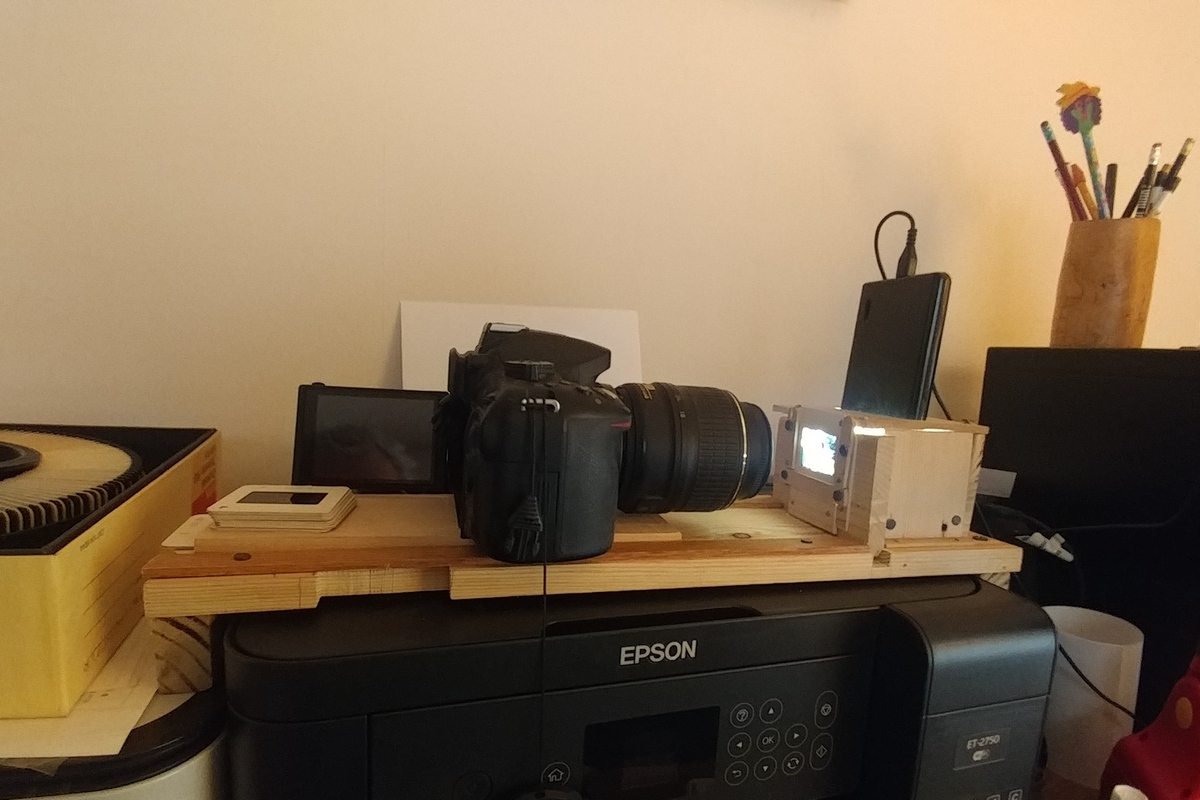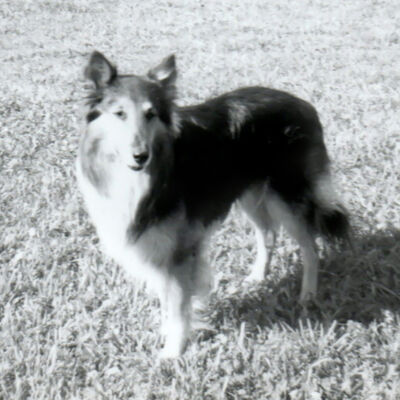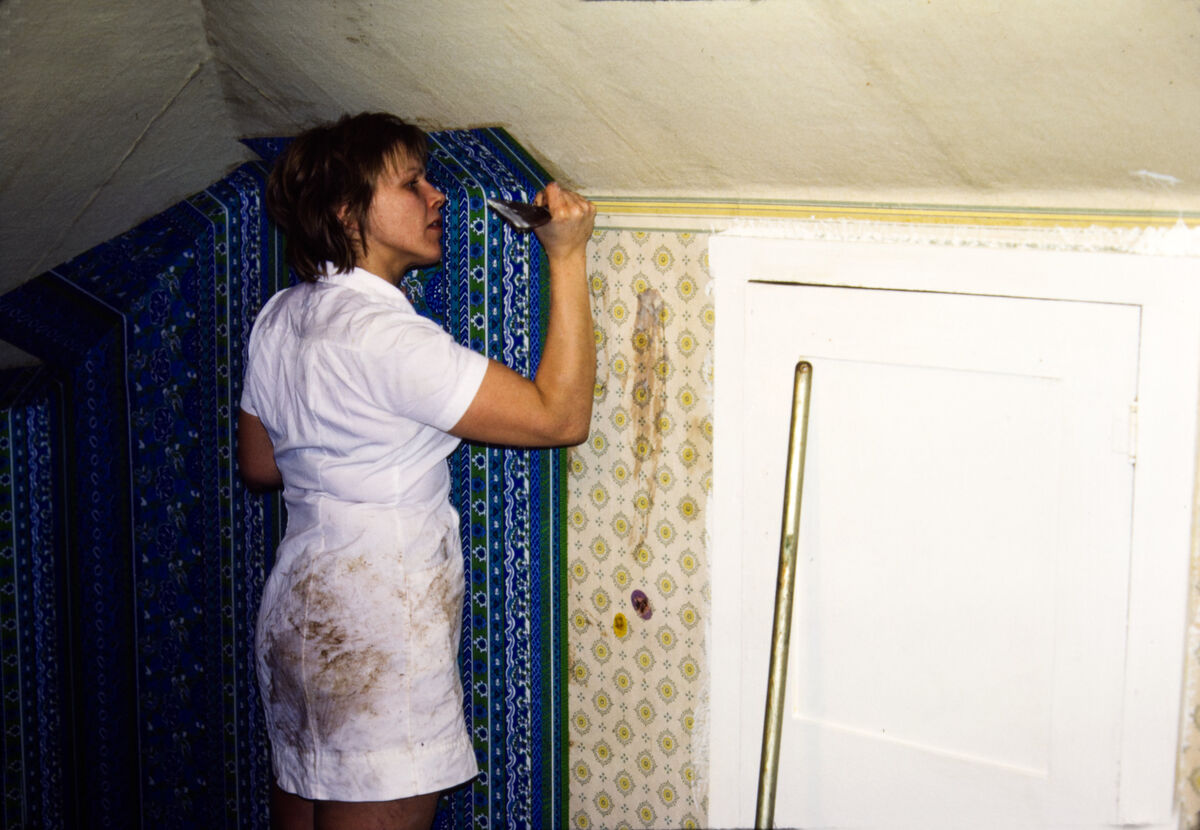Copying Slides and Negatives
Jul 12, 2022 08:31:35 #
fetzler
Loc: North West PA
There have been many discussions on copying 35mm slides and negatives using scanners and various devices.
Peter Forsgard has a video on an interesting device for copying 35mm negatives and slides. Peter makes videos on Olympus cameras but this device can be used with any camera.
https://www.youtube.com/watch?v=1rX9Klcv4SU
Peter Forsgard has a video on an interesting device for copying 35mm negatives and slides. Peter makes videos on Olympus cameras but this device can be used with any camera.
https://www.youtube.com/watch?v=1rX9Klcv4SU
Jul 12, 2022 09:09:14 #
Thanks for that. Clever. With a little table tripod, you're good to go.
https://smile.amazon.com/JJC-Digitizing-10-Levels-Brightness-Backlight/dp/B09PMFPDHQ/ref=sr_1_9?crid=2IGBJSBMOU6SF&keywords=JJC%2BFDA%2BLED1&qid=1657631314&sprefix=jjc%2Bfda%2Bled1%2Caps%2C61&sr=8-9&th=1
https://smile.amazon.com/JJC-Digitizing-10-Levels-Brightness-Backlight/dp/B09PMFPDHQ/ref=sr_1_9?crid=2IGBJSBMOU6SF&keywords=JJC%2BFDA%2BLED1&qid=1657631314&sprefix=jjc%2Bfda%2Bled1%2Caps%2C61&sr=8-9&th=1
Jul 12, 2022 09:49:13 #
fetzler wrote:
There have been many discussions on copying 35mm slides and negatives using scanners and various devices.
Peter Forsgard has a video on an interesting device for copying 35mm negatives and slides. Peter makes videos on Olympus cameras but this device can be used with any camera.
https://www.youtube.com/watch?v=1rX9Klcv4SU
Peter Forsgard has a video on an interesting device for copying 35mm negatives and slides. Peter makes videos on Olympus cameras but this device can be used with any camera.
https://www.youtube.com/watch?v=1rX9Klcv4SU
Very interesting. I'll probably order one just to test it. It appears to have many of the required elements.
The devil is in the details, though. I've copied film for 43 years, and know the ropes. A very important part of the equation is how to keep the film perfectly "plano-parallel" to the sensor. In other words, the plane of the film must be aligned with the plane of the sensor on both the X axis and the Y axis. The image photographed should appear as a perfect rectangle, not a rhombus or trapezoid.
Another very important detail is how you convert negatives to positives. Getting accurate color conversions and smooth black-and-white tonal conversions can be a challenge.
Even if you buy this $25 wonder, reading my 20-page white paper on the topic might be useful to you. The download will open in your PDF reader.
Jul 12, 2022 10:05:10 #
fetzler wrote:
There have been many discussions on copying 35mm slides and negatives using scanners and various devices.
Peter Forsgard has a video on an interesting device for copying 35mm negatives and slides. Peter makes videos on Olympus cameras but this device can be used with any camera.
https://www.youtube.com/watch?v=1rX9Klcv4SU
Peter Forsgard has a video on an interesting device for copying 35mm negatives and slides. Peter makes videos on Olympus cameras but this device can be used with any camera.
https://www.youtube.com/watch?v=1rX9Klcv4SU
I made my own out of wood that works about exactly as this one, but does one slide at a time. From using mine, I can tell you his setup would work perfect. I used my Nikon 5200 with extension tube on a kit 18-55mm zoom lens. I also used a klunky freeware app that displays the picture on the PC before you snap the pic. I think LR has this app built in. Also, I used an old cell phone flashlight app for the led light. Also good to have a remote release for the camera. Also, if doing lots of slides you would want a your camera and slide holder mounted so things wouldn't move each time you load slides.
As I said, all this worked terrific but I spent a good bit of effort building and perfecting my wooden contraption, and for $25 his purchased contraption would be the way to go imnsho.

Jul 12, 2022 13:07:32 #
fetzler wrote:
There have been many discussions on copying 35mm slides and negatives using scanners and various devices.
Peter Forsgard has a video on an interesting device for copying 35mm negatives and slides. Peter makes videos on Olympus cameras but this device can be used with any camera.
https://www.youtube.com/watch?v=1rX9Klcv4SU
Peter Forsgard has a video on an interesting device for copying 35mm negatives and slides. Peter makes videos on Olympus cameras but this device can be used with any camera.
https://www.youtube.com/watch?v=1rX9Klcv4SU
At that price, I would question the quality of the light.
Jul 12, 2022 13:39:44 #
fetzler
Loc: North West PA
burkphoto wrote:
Very interesting. I'll probably order one just to ... (show quote)
I put this up as it seemed to be an interesting and useful device. I read your white paper some time ago. It has a lot of good advice.
With my Olympus Camera it would be necessary to select 3:2 aspect ratio (or do this in post) and set the magnification near 0.5x.
Jul 12, 2022 13:45:12 #
fetzler wrote:
I put this up as it seemed to be an interesting and useful device. I read your white paper some time ago. It has a lot of good advice.
With my Olympus Camera it would be necessary to select 3:2 aspect ratio (or do this in post) and set the magnification near 0.5x.
With my Olympus Camera it would be necessary to select 3:2 aspect ratio (or do this in post) and set the magnification near 0.5x.
I’m using 3:2 on my Micro 4/3 GH4 camera. That’s for a a full slide or 35mm negative. I’ll use 4:3 for 6x4.5cm and 6x6 and 6x7. Sometimes I get closer and crop as I copy. 1:1 on a Micro 4/3 body is a quarter of a 35mm frame!
Jul 13, 2022 10:43:57 #
jcboy3 wrote:
At that price, I would question the quality of the light.
I used a light from a cell phone and had no problem. White balance on auto as always, but if there would be a problem, which I doubt, you could easily adjust white balance as needed in pre or post. I think someone said ideal Light would be 6500K. Whomever makes this contraption would very likely install the proper light for slide copying.
The biggest problem I had was with the quality of the slides. 50 years ago I wasn't that good of a photographer. Haven't improved all that much either, but at least I care a bit more now, and SLR's then were not particularly great compared to today. Then I only took pictures to document something, like a party, camping, skiing, never just to take a picture of something. In those days if I was reasonably in focus and exposure was enough to see what was in the picture, I was happy.
Here's a typical slide from 47 years ago. I took it when my wife was wallpapering our 1/2 attic, using my Pentax 35mm SLR. Pretty sure the only processing I did was to crop it. Most all of the 1000+ slides came out about the same. Some I did more post work but mostly they all just serve to poke the memory cells a little, and I might crop them to fit my 1920x1080 TV screens.
Jul 13, 2022 10:55:13 #
BigDaddy wrote:
I used a light from a cell phone and had no proble... (show quote)
The light from an iPhone screen is actually pretty good for copying slides and negatives. It's not perfect, but most folks will find it acceptable.
I used my iPhone for a while when I first started building a rig to copy film. I made a JPEG in Photoshop with the RGB values 0,0,0, and saved it to the phone. I set the phone screen to never dim, set brightness to maximum, and connected the phone to a charger. I made sure to keep the phone two inches underneath a piece of milk Plexiglas so the LEDs would be completely diffused and invisible.
Jul 13, 2022 11:22:49 #
burkphoto wrote:
The light from an iPhone screen is actually pretty... (show quote)
Yes, that's basically the same thing I did but I didn't use the light from the screen, I used the flash light used by the phones flashlight app. I cut a slot in a small box for the cell phone, painted the interior white, and used a diffuser in the slide window from an old slide viewer.
After all that, I would highly recommend just spending $25 on the contraption in the OP message. Also, I took a few with my old Panasonic FZ18 which has an 18-503mm zoom lens with Macro settings built in. That worked great with no need for extension tubes. I mistakenly thought my Nikon would work even better with an extension tube, so I sprung for the tubes. I couldn't tell the difference in picture quality, but I had remote release for the Nikon, so that's what I used.
Jul 13, 2022 14:39:44 #
If you want to reply, then register here. Registration is free and your account is created instantly, so you can post right away.


